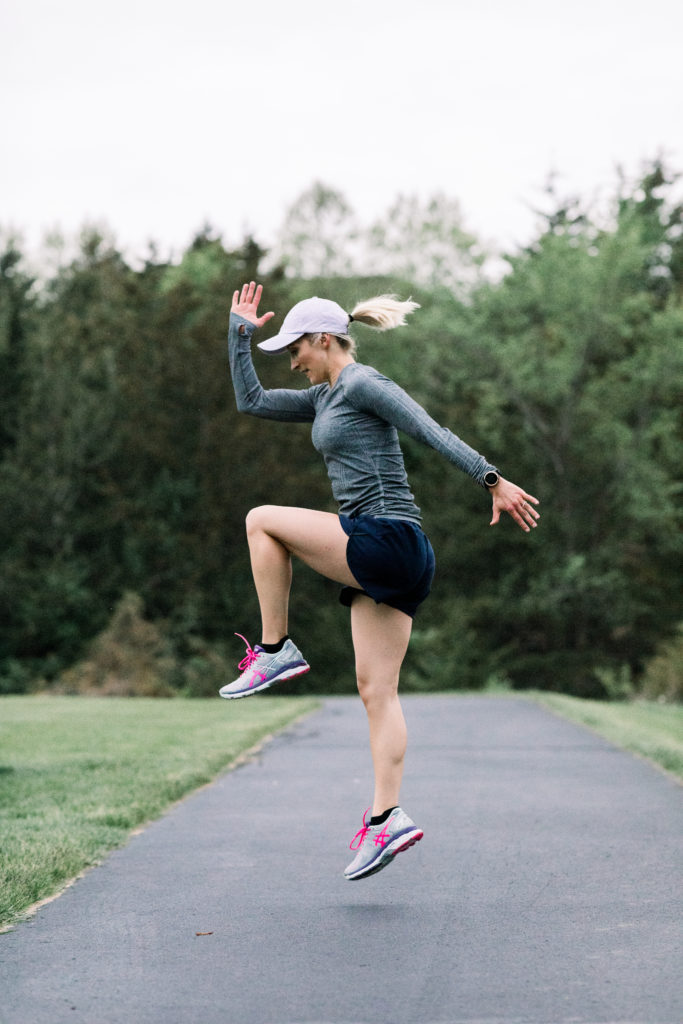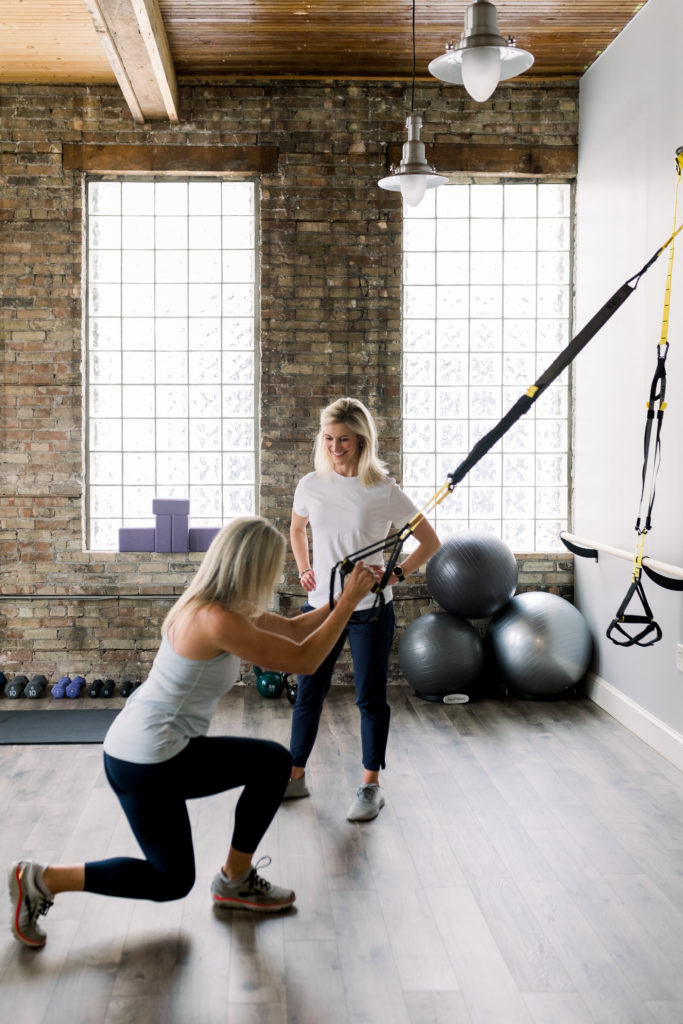Thinking about getting back into running? Or maybe for the first time? Sometimes getting started is the hardest part! Here are some helpful tips to help get you prepared for running those first few miles.
Some of the biggest areas we see people make mistakes that cause them to quit their training program include:
- Increasing mileage too quickly
- Poor footwear
- Lack of cross training
- Poor fueling strategies
Weekly Mileage Increase
It is important to gradually and properly increase your running mileage to avoid injury and burnout. We recommend a maximum of 10% increase each week. Your physical therapist or running coach can help you establish a starting place and strategies to safely and efficiently build miles up from week to week.
If running is new to you or you have been away from it for a while (longer than 2-3 months), you should start with general walking and run/walking workouts. Over time you will do less walking and resting and more running. This is the anticipated progression:

The gradual mileage increase is important because if you rush into too many miles, too quickly, you are at risk for orthopedic injury, inflammation, illness or burnout. Signs of overtraining include: pain in the body, excessive fatigue (that does not resolve with rest), excessive muscle soreness (that does not resolve with rest, gentle exercise and stretching).

Footwear
Picking out a pair of running shoes that your body LOVES can be challenging at first. But it’s a very important part of the running experience and is well worth the investment of time and money to find that perfect pair.
There are 3 main types of running shoes: Stability, Motion Control and Neutral.

There are many brands and support styles. There is no “one size fits all” shoe or brand. Popular brands include: Brooks, Asics, Saucony and Hoka. It is important to find a running shoe that works for you!
If you are new to running, don’t have many foot or lower leg issues, and have no idea where to start, I would recommend starting with a Motion Control shoe. You can adjust support up or down from there if it is not working for you. Working with a sports medicine physical therapist or running expert can help you pick out a shoe that is right for you.
It is important that you invest in a shoe that is specifically designed for putting on miles with walking and running. Many individuals make the mistake of trying to put a lot of miles on training shoes, which are designed to be more Neutral fitting. These shoes are flexible and useful while doing strength training and plyometrics, not for long distance running and walking.
In picking out shoes, it is important to consider if you are running on hard vs. soft surfaces. Concrete and asphalt roads, sidewalks and paved bike trails are considered to be “hard surfaces” and may require a little extra cushion support in your running shoe. While soft surfaces such as hiking and walking trails or mowed grassy areas may offer a softer surface and can be easier on your legs, feet and joints. If you are running mostly trails, you may want to consider buying a “Trail” style running shoe instead of a “Road” shoe. There is better traction and support provided in these shoes to help avoid slipping and falling.
Don’t change what doesn’t need fixing! If you have a running shoe brand and style that has worked for you in the past, stick with it! People commonly develop new and unnecessary irritations and injuries from changing shoe styles and brands when not necessary.

Cross Training
Regardless of how often or how far you are running, cross training is super important! Running is a beautiful sport, but it is very repetitive. Meaning that if you only run for exercise, you are stressing and straining your body the same way over and over again, which can lead to overuse injuries. Cross training helps to challenge and strengthen your body in different ways that can compliment your running performance and help prevent injury. Cross training can include a variety of things, anything other than running!
Mobility Work 2-3x/week – examples include yoga, pilates, barre, basic stretching, foam or ball rolling. Check out our Runners Mobility Sequence on YouTube for a short stretching routine you can perform after a run.
Cross Training 2-3x/week – examples include elliptical, biking, swimming, hiking, strength training, walking, paddle boarding, skiing, volleyball, soccer, etc. Give your legs a break from repetitive running motions. The options are endless!
Full body strength training is important. As runners, strengthening our legs tends to get prioritized, but our core and upper body strength matters too! Endurance strength training is an element to focus on as you build up your miles. This includes lower load and higher repetition strengthening (example: 3 x 12-15 reps)

Fueling & Nutrition
by Rachel Turi, RD
Hydration is Huge! On a normal day, aim to drink half of your body weight in fluid ounces of water per day. Keep in mind the more you run, the more sweat you lose, and therefore the more water you may need to drink beyond this normal recommended amount. Remember to drink plenty of water before and after a run (and during if you feel the need). If you want to avoid going to the bathroom during a run, try to hydrate well several hours ahead of time or even more helpful, the day before. Up your water intake if the weather is warm out, and you find yourself sweating more than usual. The best indicator of hydration status is the color of your urine. Look to maintain a light lemonade (or clearer) colored urine throughout the day. For every pound of sweat you lose during a run, drink 16-20 ounces of water to replace it.
Pre-Run Fueling. Don’t go into a run hungry! You may be able to suffer through it, but energy, motivation, enjoyment, and quality of effort will go down. If it has been more than a couple hours since you’ve eaten, try having a small snack ahead of time. An ideal pre-run snack is primarily carbohydrate based. Carbohydrates are what fuel our muscles, brain and organs…all of which are required when running. Something small like a banana, granola bar, slice of toast with peanut butter, handful of crackers or pretzels, are all great ways to provide your body with the energy it needs to fuel your run.
Post Run & Recovery Fueling. Nutrition plays a critical role in our recovery process and injury prevention. If we replenish our body with the proper nutrients, our chances of a shorter and more successful recovery are greater. Try and eat within 30-60 minutes of a workout. Get some form of nutrition in, preferably carbohydrate plus a little protein. If you typically eat a meal after a workout, then as long as it has both protein and carbohydrate, you’re set! If it is going to be an hour or two until your next meal, you can have a recovery snack to hold you over. For optimal recovery, shoot for obtaining a 3:1 ratio of carbohydrates to protein after a workout.
Balance is Key. In general, balanced nutrition is going to help you get the most out of your running, improve your health, and prevent future injury from occurring. Include a balanced diet of complex carbohydrates from whole grains and starches, a variety of lean protein sources, and plenty of healthy fats from things like nuts, seeds, avocados and healthy oils. Most importantly, do not forget to load up on fruits and vegetables to get your daily doses of essential vitamins and minerals. Every food group has a purpose, so work to include them all. Your body will thank you!
Need More Help?
If you are in need of more personalized advice on returning to running, consider consulting with one of our running specialized physical therapists. Schedule your FREE DISCOVERY CALL today!
